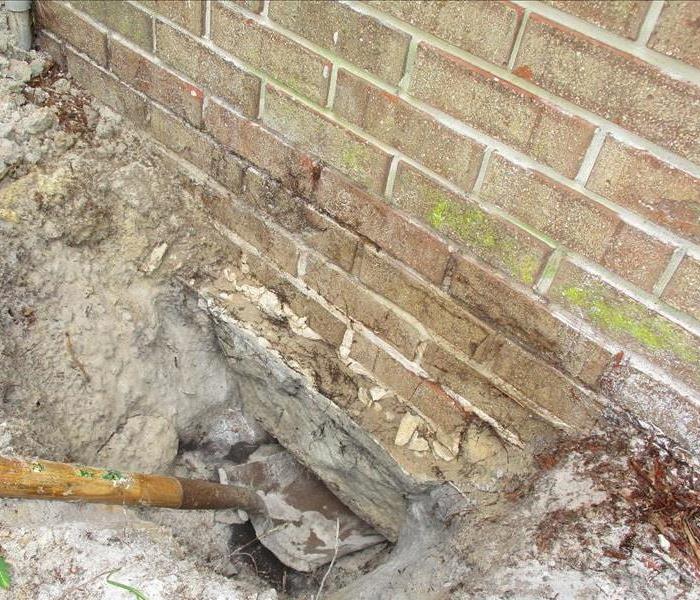More in depth information about Capillary Action
7/18/2019 (Permalink)
Capillary action refers to water’s ability to travel up against the pull of gravity through porous materials. Water “wicking” up through a paper towel is one typical example of this action. The water follows the direction of the paper fibers. Capillary forces are both powerful and somewhat secretive, since they often work in the dark of a crawlspace, causing significant damage to a building without the occupant’s knowledge. Evidence of capillary action can be seen on many older brick foundations as a white line visible a foot or so above the ground, caused by a process known as efflorescence. This occurs when water that is drawn up by capillary action evaporates, leaving behind a residue of salts, minerals, and other materials. Capillary action prefers small holes or pores such as those found in concrete and brick, rather than larger ones. The concrete footings wick the water up from the ground, where it then travels up the foundation wall. Plastic sheeting placed in footing holes before pouring concrete can help to prevent groundwater wicking. Large pore sizes, such as pea gravel and coarse sand, serve to “break” the flow of capillary water. Even two nonporous materials can provide a channel for capillary action to occur if placed close enough together. Lapped wood siding is an example. Rainwater striking the side of the house will run down the siding to the edge allowing a bead of water to get sucked up behind the siding, wetting the backside of the siding. It can be hard to observe such forms of capillarity until severe damage has already happened. Capillarity can be controlled by providing a capillary “break” like plastic, metal, a damp-proofing compound. Adding another impermeable material or air spaces too large for capillarity to occur can also control capillarity.





 24/7 Emergency Service
24/7 Emergency Service
